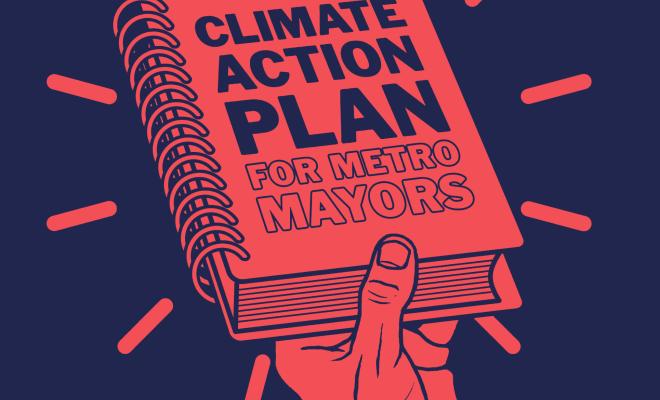21 Aug 2025
What can the next Mayor do for people and planet?
We're facing a climate and ecological emergency – the biggest threat we’ve ever seen to humanity’s existence. Whoever is elected as the next Mayor of West Yorkshire can’t single-handedly solve the crisis, but they must use the powers they have to make as big a difference as possible. They have a very important role to play in providing a guiding vision for the area, and will need to work with councils, businesses, local communities and the national government.
The West Yorkshire Combined Authority (WYCA) has had a Climate and Environment Plan in place since 2021, and some progress has been made – for example, the Mayor has committed to a Green Jobs Taskforce. The WYCA achieved a fairly average score in Climate Emergency UK’s Council Climate Action Scorecards, which assessed all UK councils on the actions they've taken towards net zero. However, analysis of the Climate and Environment Plan by local groups forming Get West Yorkshire Climate Goals on Track shows that action needs to be accelerated in several areas. This includes better integration of actions to tackle the climate and ecological emergency and more emphasis on supporting communities most vulnerable to climate change. This Climate Action Plan will help the next Mayor do this using the devolved powers and funding granted to them.
How green is West Yorkshire?
10 priorities for the next Mayor
- Ensure all plans, programmes and investment decisions are in line with what’s needed to address the climate and ecological emergency and are aligned with international, national, regional and local carbon reduction targets.
- Ensure that the voices of those most impacted by climate breakdown and nature loss are heard and given centre-stage in decision making.
- Increase the ambition for creating new green jobs in the area and prioritise green skills training. Protect workers and communities through a just transition to a low-carbon, nature-rich, circular economy.
- Ensure new housing is zero carbon and served by sustainable transport using their strategic planning powers and influence on constituent local planning authorities. Use brownfield regeneration and affordable housing funding to deliver zero-carbon homes in locations accessible by public transport and active travel.
- Take a leading role in bringing existing homes in the area up to high energy efficiency standards to reduce emissions and put an end to fuel poverty. Ensure that existing homes are protected from extreme weather events.
- Set targets to at least double public transport use, cycling and walking within the next 10 years. Step up action to meet these targets, including investing in the right infrastructure and working with operators to ensure that public transport services are reliable, affordable and better connected.
- Lead the development and implementation of Local Area Energy Plans (LAEPs) with a clear focus on increasing the supply of clean, renewable energy, including supporting community energy initiatives and the roll-out of heat pumps.
- Produce a Local Nature Recovery Strategy (LNRS) for the area that doubles tree cover, protects and enhances nature, eliminates green space deprivation, and helps the area become more resilient to the impacts of climate change.
- Lead the development of a circular economy strategy for the region with local businesses and local authorities to both cut waste and resource consumption and boost the green economy.
- Use their influence to prevent any increase in the number of flights at Leeds Bradford Airport. Refuse to commit infrastructure spending that facilitates such growth until such time as genuinely zero-emission and ecologically sustainable aviation fuels are adopted by all aircraft using the airport.


